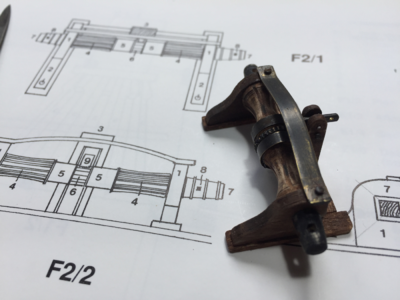Hello, fellas! I am continuing the series of posts using the Proxxon MF70 mill to fabricate different parts for our models. Today, we will make a Pawl Ring found in windlasses. So a brief history of Windlass to start with...
In some cases, two pawl rims were fitted at the extremities of the barrel, instead of the center. This appears to be a later style. In most cases the internal diameter of the pawl ring was eight-sided, to conform to the shape of the barrel, and also prevent any slip. See some images courtesy of Peter Goodwin.
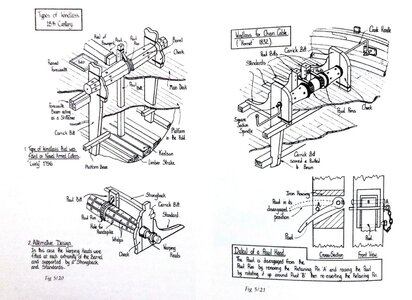
I was experimenting with dividing head for my Proxxon mill where I just mil the round stock and... something interesting came to mind, Can I make a gear, seriously? I do realize that the dowel stock I have is not round, I mean it is not round as you can see below
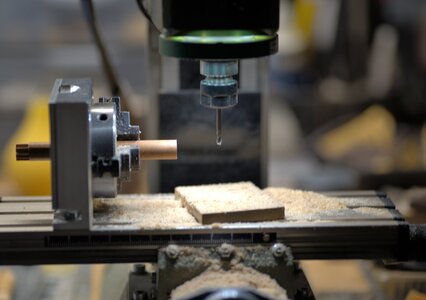
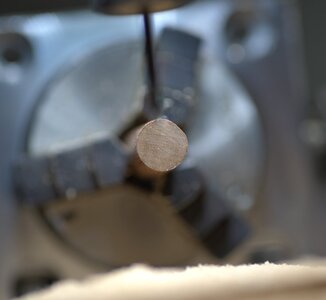
To make the stock 'round', I just use the endmill and rotate the head all the way, then slide the table a bit and again turn the dividing head. I think it is an improvement and
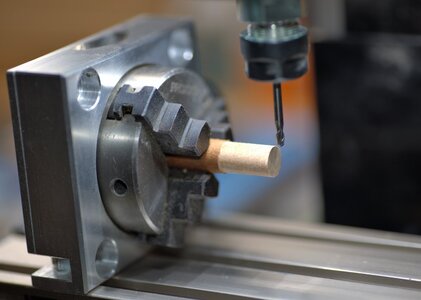
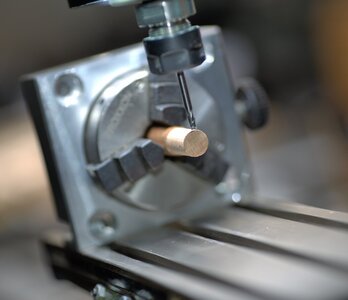
For this setup, I use a 9.5 ~9.7mm cherry wood dowel and a 2.50mm endmill. Before you will make the first cut take a look and position the endmill about 10 minutes before noon. I came to this position through various experiments. Different offsets would yield different shapes of the gear (pawl rim). The deep of the cut should be the size of the diameter of the endmill. I start with a small cut, adjust and make sure it is the way it should be, and cut the entire length.
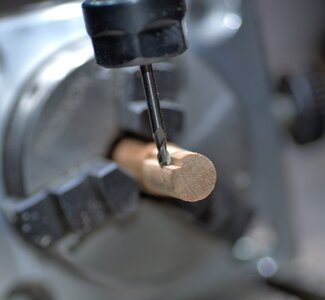
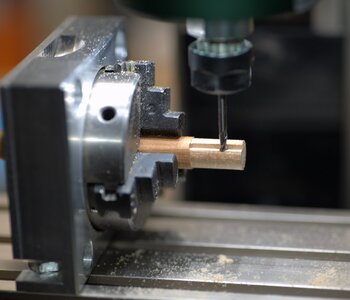
The next step will require good eyesight (If you come up with a better, mathematical approach I will owe you a lunch). While the wood stock is still tightened in the jaws, turn the divided head counterclockwise (towards yourself). Position the endmill exactly on the top edge of the first cut. I found it is a requirement if you want to make perfect gear. Make a small cut and adjust accordingly (if necessary). DO NOT adjust by sliding the 'X' and 'Y' axis tables, rotate only the dividing head, not the wood stock!
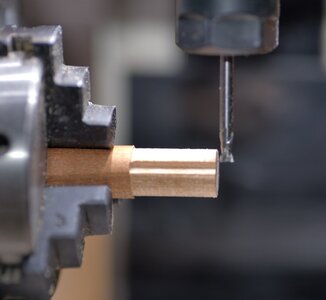
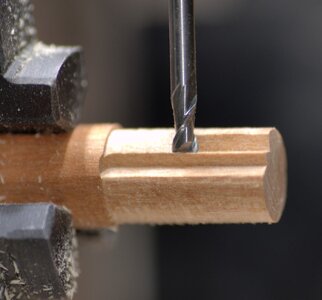
Once the next cut is done, repeat the same procedure as described above. Rotate the head to the point where the endmill will be on the top edge of the cut. *HINT: I set on the small stool (my grandkids) so my eyes are in the line of the endmill. This way, I can position the end mill correctly.
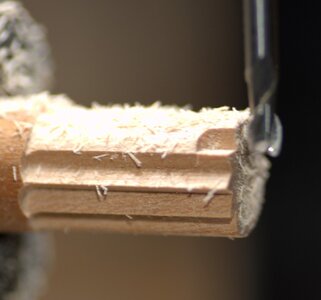
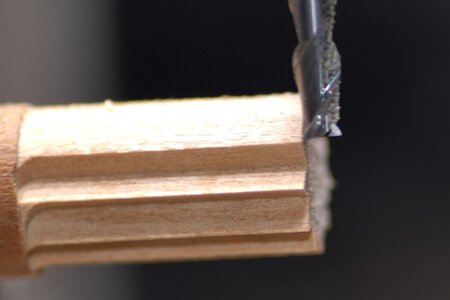
Alright...you will have to repeat the same task until your first cut becomes a 'tooth' of a gear. If everything goes well, you should have a perfect shape gear!!
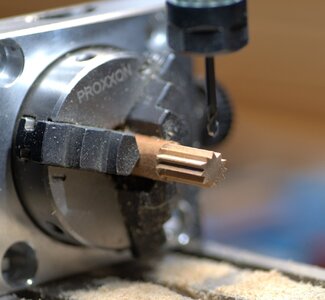
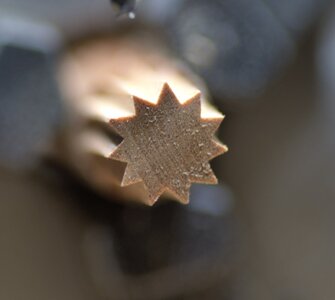
If you play with the different sizes of the endmills and position the endmill 15 minutes before noon, you will have a bit different shape of the gear. This was made by using the 'trial and error' method, If you know a better way to calculate the number of teeth to make a 'perfect' pawl rim, please share it. On the left side, are the results of my initial experiments and practices. On the right side are the results I will mostly use on my models. What do you think?
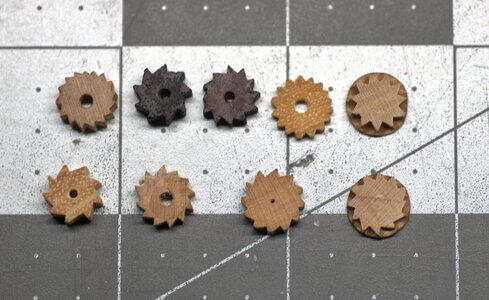
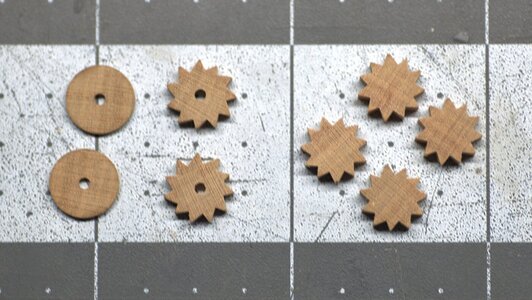
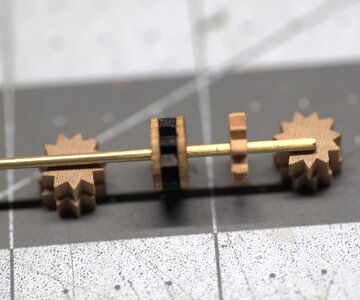
Hope this was informative and may help you develop some mill skills. Please give me your feedback or better the way you would do your own Pawl Rim!! Thank you for stopping by!
P.S. Click on an individual image to make it bigger.
The Windlass
This piece of equipment was generally used as an alternative to the capstan on such vessels as cutters, schooners, lugers, and smaller classes of gun brigs. Unlike the capstan, its barrel was set horizontally between two vertical bits and, turned with either handspikes or a ratchet and crank device. The barrel was usually made from oak, it was eight-sided and tapered towards its extremities. To prevent the windlass reversing when either hauling or veering a pawl and pawl ring were fitted. The pawl was made from cast iron and was located at the center of the length of the barrel, with securing bolts that were flush at their heads.In some cases, two pawl rims were fitted at the extremities of the barrel, instead of the center. This appears to be a later style. In most cases the internal diameter of the pawl ring was eight-sided, to conform to the shape of the barrel, and also prevent any slip. See some images courtesy of Peter Goodwin.

I was experimenting with dividing head for my Proxxon mill where I just mil the round stock and... something interesting came to mind, Can I make a gear, seriously? I do realize that the dowel stock I have is not round, I mean it is not round as you can see below


To make the stock 'round', I just use the endmill and rotate the head all the way, then slide the table a bit and again turn the dividing head. I think it is an improvement and


For this setup, I use a 9.5 ~9.7mm cherry wood dowel and a 2.50mm endmill. Before you will make the first cut take a look and position the endmill about 10 minutes before noon. I came to this position through various experiments. Different offsets would yield different shapes of the gear (pawl rim). The deep of the cut should be the size of the diameter of the endmill. I start with a small cut, adjust and make sure it is the way it should be, and cut the entire length.


The next step will require good eyesight (If you come up with a better, mathematical approach I will owe you a lunch). While the wood stock is still tightened in the jaws, turn the divided head counterclockwise (towards yourself). Position the endmill exactly on the top edge of the first cut. I found it is a requirement if you want to make perfect gear. Make a small cut and adjust accordingly (if necessary). DO NOT adjust by sliding the 'X' and 'Y' axis tables, rotate only the dividing head, not the wood stock!


Once the next cut is done, repeat the same procedure as described above. Rotate the head to the point where the endmill will be on the top edge of the cut. *HINT: I set on the small stool (my grandkids) so my eyes are in the line of the endmill. This way, I can position the end mill correctly.


Alright...you will have to repeat the same task until your first cut becomes a 'tooth' of a gear. If everything goes well, you should have a perfect shape gear!!


If you play with the different sizes of the endmills and position the endmill 15 minutes before noon, you will have a bit different shape of the gear. This was made by using the 'trial and error' method, If you know a better way to calculate the number of teeth to make a 'perfect' pawl rim, please share it. On the left side, are the results of my initial experiments and practices. On the right side are the results I will mostly use on my models. What do you think?



Hope this was informative and may help you develop some mill skills. Please give me your feedback or better the way you would do your own Pawl Rim!! Thank you for stopping by!
P.S. Click on an individual image to make it bigger.







